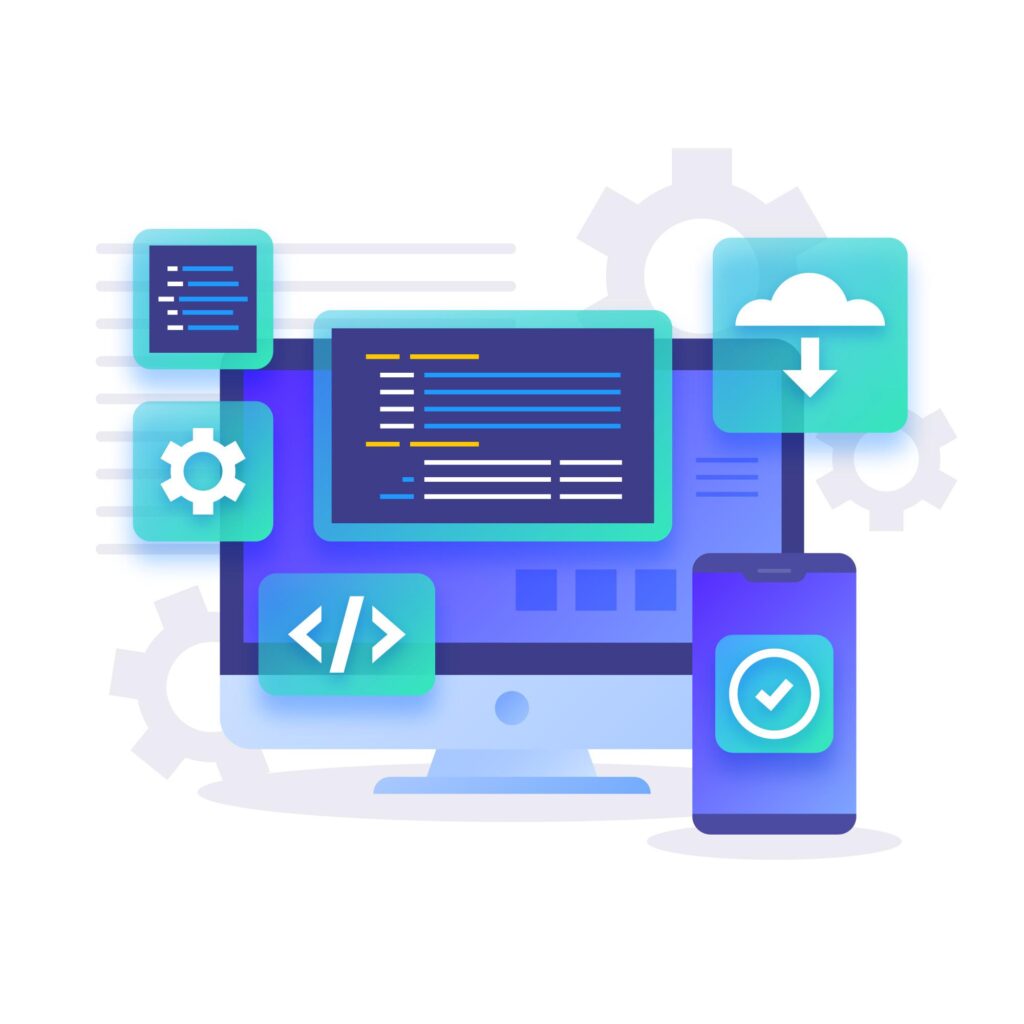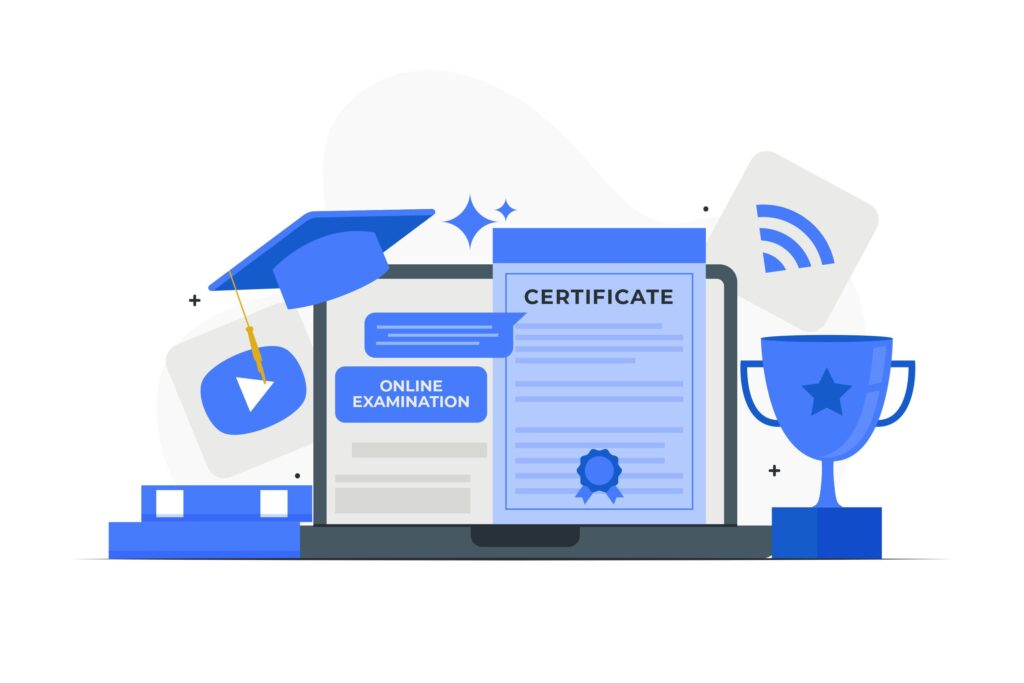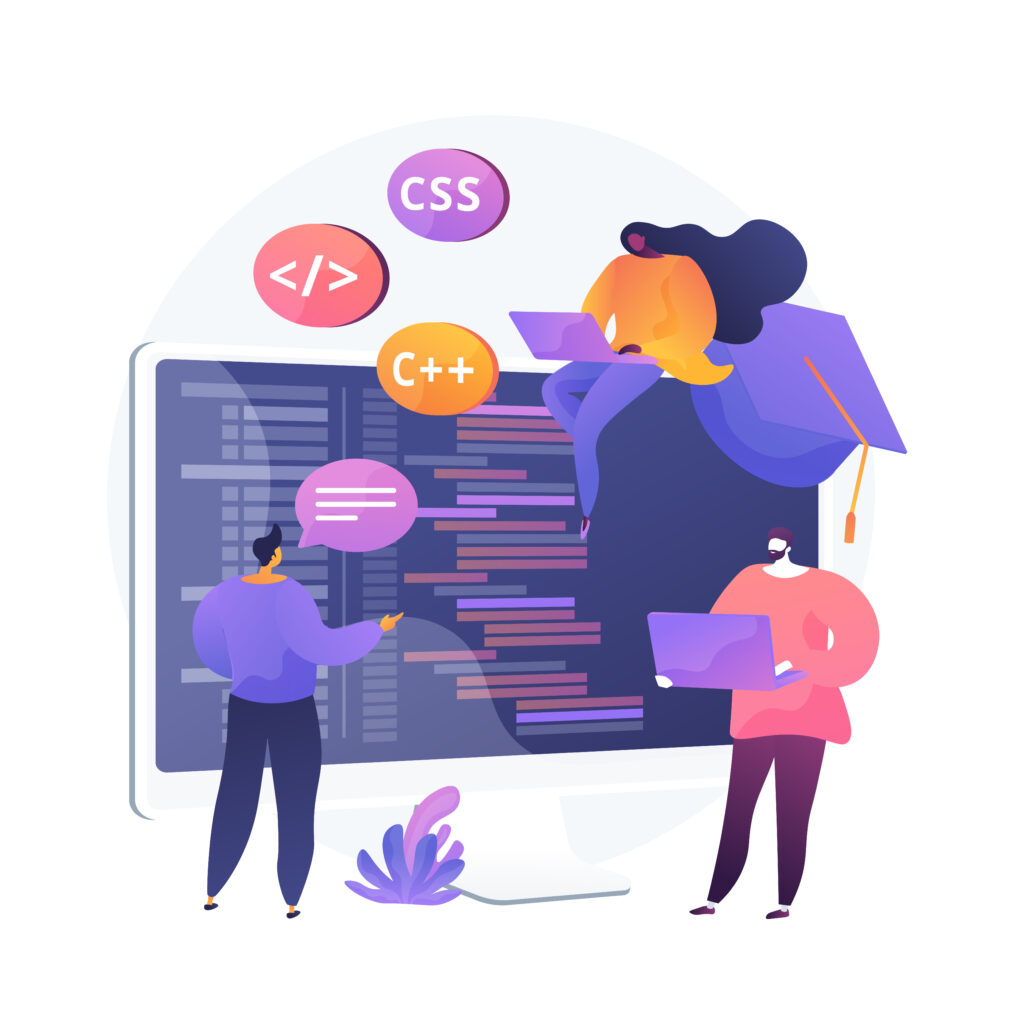By Samantha Williams on February 23, 2024

A top-notch professional portfolio is the key to securing a great job in a competitive market. Your portfolio is a collection of your best work from any projects you have created, managed, or collaborated on for potential employers to view.
Seasoned professionals will have plenty of material to choose from. However, early-career professionals or college students applying to their first job or graduate school will have to be more creative when building their professional portfolio to stand out from hundreds of other job seekers.
College professors advise their students to build a professional portfolio from the start and emphasize having consistency and discipline in everything they do. It is even more important that students add professional development to their portfolios as they gain experience, which is why it is encouraged to start early and edit often.
Building a professional portfolio before graduation can be daunting. There are several aspects to consider, from gaining the necessary experience and deciding what projects are most beneficial to organizing and getting your portfolio in front of hiring managers. So, we have broken down all the steps to simplify the process for you.
What to Include in your Portfolio?
There are many topics you can use to demonstrate experience in your professional portfolio, and what works best for you will depend on your career field. While many job seekers will showcase their soft skills, it is equally important to convey professional development and career readiness in your portfolio.
When listing professional development, start by including your projects and experience that also convey your technical skills.
Projects

- descriptions of the projects – your role, technologies used, and outcomes
- code repositories – for class projects or personal projects demonstrating technical skills
- tech stacks – the software stacks used to build the front end and back end of your applications
- showcase – screenshots or videos of the application UI/UX
- links – to demos, published research, news articles, or documents
If there’s an aspect of your career field you are passionate about, emphasize it here. Whether it’s cyber security, software engineering, AI, or machine learning, having a bias toward a particular area will show recruiters you are goal-oriented.
Experience
You can easily show your experience in your professional portfolio by writing a career summary, outlining your career goals, and choosing work examples that reflect those goals. Consider taking this approach:
- summarize – any relevant internships, research, or work history
- describe – professional responsibilities and contributions
- emphasize – performance metrics or career goals
- quantify the outcomes of a project or your impacts on a team
Technical Skills

Skills relating to specific tasks, or the tools used to complete a job, are called technical skills and vary across career fields. This section is where you will show practical or expert knowledge:
- soft skills – teamwork, problem-solving, time management, or written and verbal communication
- hard skills – programming languages, software stack.
Don’t get too carried away, as taking a few beneficial hard skills and mastering them is better than being a jack-of-all-trades.
Certificates

Google, Coursera, and LinkedIn Learning have soared in popularity with college students and professionals seeking to obtain high-demand job skills in these areas:
- cybersecurity
- data analytics
- digital marketing & e-commerce
- IT support
- project management
- user experience (UX) design
Most, if not all, of the courses are online and can be completed in as little as a few hours or as long as three months. There are no prior education or experience requirements to obtain these certificates either.
Recently, Teamup partners with Google to offer scholarships for those pursuing a Google Career Certificate program. Each program utilizes instructional videos taught by Google experts, readings, assessments, and hands-on activities. When all the courses in the program are completed, you earn a certificate and receive access to career support resources, including recruiters.
Achievements
Leadership experience can be just as important as education. If you are a college student in charge of an organization or involved in tutoring and mentoring, then list those extracurricular activities in this section:
- highlight – academic awards, competition wins, scholarship details, fellowships, or grants
- show versatility – leadership experience, athletics involvement, volunteer work, or mentorship
- list – relevant college courses by name and semester
Listing college courses will also show any recruiter or graduate school admissions committee that you have experience in that area. Not every course number is the same, so list it by the name and the semester it was completed to avoid confusion.
What Is The Difference Between a Resume and a Portfolio?

Everything that has been listed thus far makes it seem like we’re building a resume instead of a portfolio. So what sets them apart?
A resume is used in conjunction with a cover letter when applying for a specific job and is typically laser-focused on the position being applied for. The purpose of a resume and cover letter is to grab the attention of hiring managers, whereas a professional portfolio is meant to provide a deeper understanding of the work you do and who you are.
Since a portfolio is a collection of projects you have created, managed, or collaborated on, it’s also the perfect opportunity to showcase your ambitions or motivations that might not be evident in your work experience.
If there’s an aspect of your career you are passionate about, emphasize it in your professional portfolio. If you haven’t found something you’re passionate about, there are many ways you can find your niche.
How Do You Expand Your Portfolio?
Getting involved with school-sponsored and non-profit organizations is essential to developing professional relationships, mentorships, and opportunities for additional training.
Join Student Organizations

Joining student organizations or being in charge of one can be as important as your education. Whether it’s for a local chapter of a larger organization or a small group of students coming together in support of a mission, certain things you can accomplish relating to your field will show well-roundedness.
You can find student groups that align with any aspect of your life, and there are endless opportunities to join non-profit and volunteer-based operations. Some of the skills and experience you can gain from joining extracurriculars include:
- exploring new passions
- social skills
- networking
- attending or hosting conferences and competitions
- completing volunteer work
These experiences also double as achievements or technical skills when highlighting non-academic activities in your professional portfolio.
Several computer science organizations with active student chapters are:
- Association for Computing Machinery (ACM) – one of the largest and most well-known computing-focused student organizations. ACM student chapters organize talks, workshops, hackathons, and social events
- Institute of Electrical and Electronics Engineers (IEEE) – IEEE has computer society student branches that focus on computer engineering, software development, robotics, and more.
- National Society of Black Engineers (NSBE) – promotes minority participation and leadership in engineering and technology. Has a very active computer science subgroup
- Women in Computer Science (WICS)
- Association for Computing Machinery Committee on Women (ACM-W) – groups that provide community, mentoring, and support for women studying computer science
Find A Mentor

A mentor can be anyone you trust to advise you in your life or chosen career field. They could be your academic advisor, a professor in your specialization, or a professional you worked with in the field or during an internship.
While internships are another great way to boost your resume, most are unpaid, limited-term, and only available for class credit. So make the most of yours while you are in the position. Aside from gaining real-world work experience, another great benefit of an internship is finding a mentor.
Mentorship is an active process, and as a college student, you need to pursue your mentor even after you finish the assignment. You can do this by:
- keeping in contact regularly through email, phone, in person, or over Zoom
- asking for a reference on your resume, or letter of recommendation
- getting feedback on a resume, portfolio, or project
Learn With Your Hands

The rise in popularity among STEM and Computer Science careers has led to more opportunities for hands-on learning that provides college students with practical job training.
For example, Teamup offers students registered in software engineering courses in the Texas A&M Department of Computer Science and Computer Engineering the opportunity to participate in the Apps for Good program to create applications in teams that will ultimately make a social impact.
The college students involved in Apps For Good are building their skills in project management and cloud computing while working with mentors to gain important professional development, such as:
- acquiring a solid understanding of software engineering
- improving complex problem decomposition and scoping large projects into actionable components
- enhancing system design thinking to map solutions to community needs and issues
- learning to integrate feedback and iterate development based on user research findings
- appreciating the power of technology to create positive change for communities
- gaining first-hand civic engagement experience by identifying and addressing real community needs
- developing skills to assess the effectiveness and impact of civic tech solutions
How Do You Market Your Portfolio?
Now that you have gathered all the ingredients to make a top-notch professional portfolio, the next steps are to put it all together and get it out there to be viewed.
There are several great ways to organize your work and make it as user-friendly as possible for hiring managers to view. Websites, repositories, and professional networking sites are great marketing tools and are available for users to access for free or for a monthly subscription.
Create A GitHub Account
GitHub is a powerful platform that allows developers to showcase their coding skills, collaborate on projects, and build a robust portfolio. College students pursuing Computer Science or programming-related fields should start building their portfolio on GitHub as early as possible.
A well-curated GitHub portfolio can serve as a virtual resume, highlighting a student’s coding abilities, problem-solving skills, and project management expertise. Common projects that can be showcased include
- Open-source contributions: Actively participating in open-source projects and contributing code to existing repositories demonstrates collaboration skills and a commitment to the coding community.
- Personal projects: Developing applications, tools, or utilities that solve specific problems or showcase unique features can highlight a student’s creativity and technical proficiency.
- Academic projects: Sharing code from class assignments or capstone projects showcases the ability to work within constraints and meet deadlines.
The key to building an impressive GitHub portfolio is to consistently commit code, document projects thoroughly, and maintain an active presence on the platform. By doing so, college students can gain valuable experience, showcase their expertise, and make a strong impression on potential employers or collaborators.
Create A LinkedIn Profile

LinkedIn offers a diverse platform for college students and professionals by offering users the tools to expand their network and utilize job insights to get ahead. Some helpful features include:
- connecting with companies, recruiters, hiring managers, and executives
- listing individual aspects of your education, internships, jobs, and skills
- access to groups, products, and jobs through keyword searches
- advertising that you are ‘Open to Work’
- ‘LinkedIn Learning,’ where you can access more than 17,000 professional development courses
‘LinkedIn Learning’ is part of LinkedIn’s Premium Subscription package, but there are more benefits in addition to accessing ‘LinkedIn Learning.’
If you don’t want to sign up for LinkedIn Premium, you can still access all jobs and most networking features for free.
Whether you use GitHub or LinkedIn, make sure you synchronize your information across platforms. Add links to each site on your resume and your website, and vice versa; add your website link to your resume, LinkedIn, and GitHub profiles.
Create A Website

Websites have long been used to share professional portfolios, and platforms similar to WordPress and Wix have become increasingly user-friendly to allow college students, or others without programming knowledge, the ability to display their work on a national or global scale.
When creating your website, you’ll start with the home page. This is where you add a website title, a brief career summary, and a contact button or form. The other pages will contain a combination of these items:
- links – GitHub, LinkedIn, or other Social Media platforms
- work samples – projects that show your experience, and technical skills
- biography – write about yourself, reiterate your achievements, interests, and career goals
- resume – write out your resume on the appropriate page
You can add as many pages as you want, but keep in mind organization and user-friendliness.
WordPress and Wix offer free or paid subscriptions, both of which include sizeable storage, templates, and these standard tools:
- site design – color and text themes, page backgrounds, and transitions
- add a section – choose what information you want on each page and how you want it laid out
- add elements – text, clip art, picture gallery/slideshow, video/music player, or HTML embeds
- saved sections – very useful for moving content across pages and saving layouts
You do not have to purchase a plan to build a basic website with WordPress or Wix.
Once you have published the site, make sure the web address is also synchronized to your LinkedIn, GitHub, and resume. This will be beneficial when applying for jobs, or if you attend any conferences.
While it may seem archaic, college students are still encouraged to print out paper resumes when attending conferences, regardless of whether they are freshmen or seniors. Showing interest in a company early can lead to internships or employment after graduation.
Attend Conferences
Many companies will spend millions of dollars hosting or attending conferences to recruit new employees. Getting physical interaction with recruiters, and putting your paper resume or business card in their hand will help you outrun the competition. There are numerous groups that hold conferences annually across the world, and these are examples of ones rooted in Computer Science.
- ACM SIGCSE – ACM’s Special Interest Group on Computer Science Education conference focused on CS education, research, and issues related to teaching computer science
- great for college students interested in academia or teaching
- IEEE Symposium on Security and Privacy – a top conference for research in computer security and information privacy
- excellent place for college students interested in cybersecurity
- USENIX Security Symposium – a forum for the presentation of security research into different areas like systems security, software, network, and more
- good fit for college students focusing on security
- Grace Hopper Celebration (GHC) – major conference promoting women in computing, with a sizeable career fair, technical talks, student opportunities, and networking
- great especially for women CS students
- EEE Symposium on Visualization (VIS) – top academic conference on data visualization and visual analytics
- for college students studying visualization, graphics, or data science
As a student, attending conferences is not always attainable.
Registration fees and expenses can quickly top the thousand-dollar mark, so first search for conferences that are in close geographic proximity and ask classmates to split travel costs. If you belong to a student organization and a conference is relevant to that field of study, there may be ways to apply for financial assistance for registration fees.
However, if you still can’t attend a conference, find out how you can bring a conference to your campus. There are many successful student-led conferences at Universities across the nation, and doing so could lead to bigger opportunities.
Tips For International Students
F-1 international students pursuing full-time academic programs only have a limited time after graduation to secure a work-sponsored visa. In order to stay in the U.S. after completing a 4-year degree, F-1 students can apply for up to 12 months of temporary employment through a program called Optional Practical Training (OPT), according to the U.S. Citizenship and Immigration Services (USCIS).
If you are an F-1 student earning a degree in specific science, technology, engineering, and math (STEM) fields, you may be eligible for an OPT employment extension of up to 24 months, the USCIS states on its website.
The USCIS has strict policies that F-1 students must follow to maintain their visa status. These policies include:
- being actively engaged in employment or volunteering for a nonprofit organization related to their field of study
- reporting status changes to Designated School Officials and updating records
- maintaining good academic standing
- working no more than 20 hours/week during school without authorization
- not engaging in unauthorized employment or violating the terms of their OPT in any way
Teamup brings in both U.S. and International students in our volunteers programs, provided they meet the hourly requirements and they can contribute to programming projects, mentor, or be involved in course development based on their skills.
Building your professional portfolio will take time, so start early and update often. Making a plan and following through can improve your odds of securing employment by graduation, but that’s not always the case.
